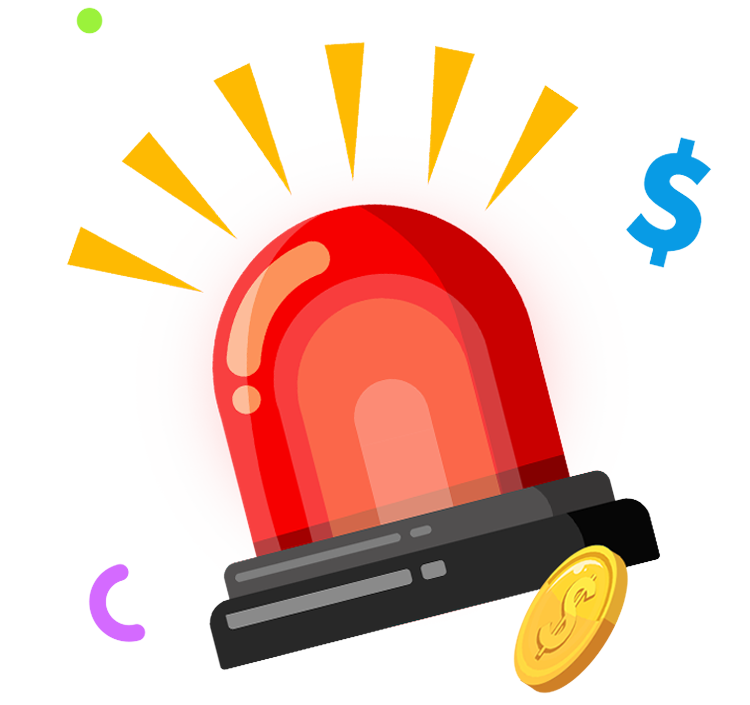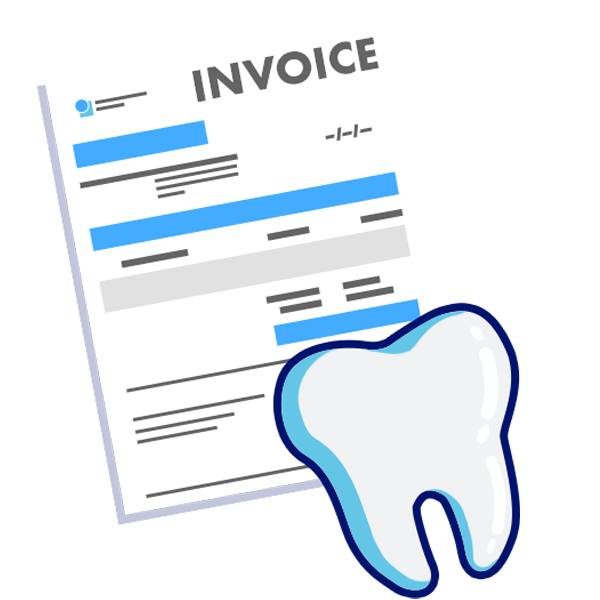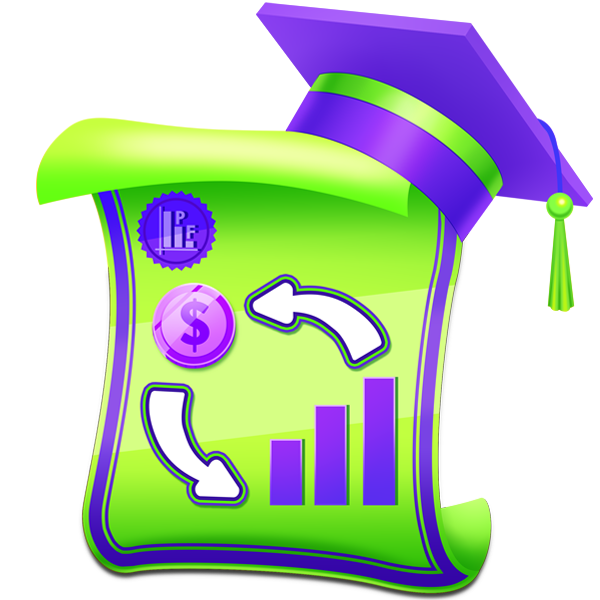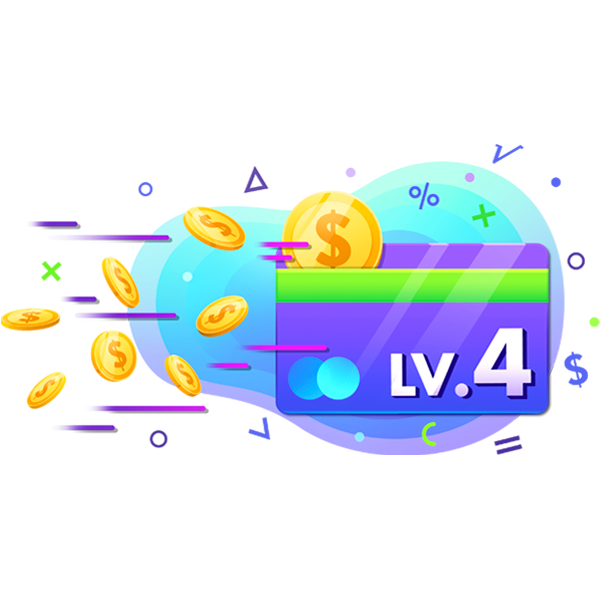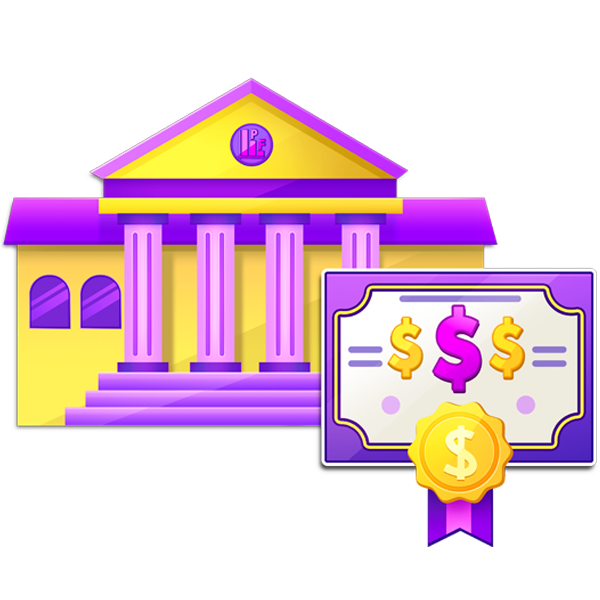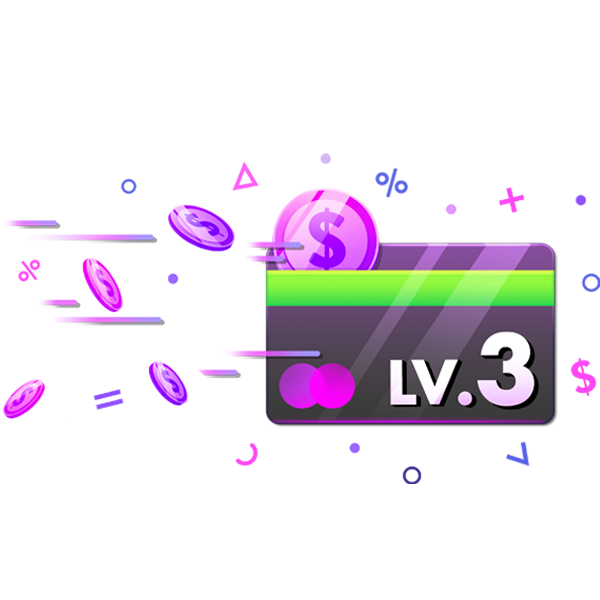Exchange Traded Fund (ETF) A type of closed-ended fund that invests in a basket of securities with some theme. Investors can purchase shares of ETFs on a stock exchange.
ESG Investing An investing philosophy that puts a high degree of importance on a company’s environmental/social impact and corporate governance, not just pure returns on investment.
Equity Compensation A type of benefit offered to employees that gives that employee some stake of ownership, typically stock options.
Equity A stake of ownership in some asset, like land, a building, or a business. A company’s stock is a share of equity in that company. If you have a mortgage on a house, your “equity” is the total value you have paid off so far. Related Lessons
Equifax One of the three major credit rating agencies that issues consumer credit reports.
Entrepreneurial Planning A type of planning that focuses on lean and agile early phases of business development, prioritizing flexibility over concrete policies. This type of planning is highly adaptable but can cause confusion among front-line workers who can find to have shifting priorities over a short period of time.
Entrepreneur A person who starts their own business. While this can apply to any businessperson, the term is most often used for a person who starts a new type of business with the goal of growth.
Entitlements Specific social welfare programs that everyone is “entitled” to – if you qualify for the program, you will receive benefits. An example is the SNAP program, also known as “food stamps”. This contrasts with other types of programs that may have a certain number of vouchers available per year, and qualified individuals must enter Read More…
Endowment Life Insurance A type of combined life insurance and savings account. The insured person makes contributions every month, and at the end of the policy receives a large final payment back. This is typically marketed as a way to save for a child’s education and have life insurance coverage at the same time.
Employment Cost Index (ECI) An economic index that measures the total cost of hiring a new employee over time, including the average cost of extra taxes and fees that employers must pay every time a new employee is hired. Click Here for our lesson on Major Economic Indicators
Employee Handbook A set of guidelines about workplace conduct and human resources principles published by most companies. This includes things like dress code, vacation policies, retirement plan information, and other information that is standard among all employees.
Employee A worker with a specific employment agreement with a parent company to work a set number of hours and perform certain tasks as part of their role on an ongoing basis. With an Employee, the employer is typically responsible for tax withholdings and pays for unemployment insurance.
Emergency Fund A type of savings that is specifically set aside in case of emergencies. The “Emergency Fund” is typically considered separate from “normal” savings, with the hope that it will not need to ever be spent.
Emergency Care The most expensive type of medical care, when the patient is facing a life-or-death healthcare emergency and utilizes emergency services. Click Here for our lesson on Health Insurance
Efficient Equilibrium A price level where the total quantity supplied and the total quantity demanded are equal.
Economies Of Scale The concept that the average cost to produce a given good or service decreases as the total quantity produced increases, taking advantage of bulk effects.
Economics The “Dismal Science” that analyzes trade-off decisions to improve the allocation of resources. Click Here for our lesson on What is Economics?
Economic Growth The total increase in economic activity in a country, sector, or economy over the course of one year. Related Lessons
EBITDA It stands for “Earnings Before Interest, Taxes, Depreciation and Amortization.” This line item on the Income Statement throws out all the extraneous activity in a company and reduces the core business operations into the number that is most used to evaluate the operating performance of a company.
Earnings The net profit of a business.
Earnings Surprise An event when a company’s Earnings Announcement is significantly higher or lower than Wall Street’s Earnings Estimate. An Earnings Surprise can make a company’s stock price jump significantly higher or lower, depending on if they did better or worse than the consensus estimate.
Earnings Strategy An investing strategy that times trades around a company’s earnings calendar, choosing stocks that the investor believes will have an Earnings Surprise and a price jump. This is considered a short-term investing strategy.
Earnings Release A formal announcement, meeting, or call where the leadership of a public company announces the earnings from the last quarter or fiscal year.
Earnings Per Share A company’s net earnings for the previous fiscal year, divided by the total number of outstanding shares of stock.
Earnings Estimate A financial analyst’s “best guess” for what a company will announce for their quarterly earnings report before the official announcement.
Earnings Calendar A calendar that shows critical quarterly dates when a company makes their formal announcement of earnings from the last quarter and expectations for the next quarter. The time around these announcements is typically the most volatile for a stock’s price.
Earned Income Tax Credit A type of tax credit that is granted to working poor families. The Earned Income Tax Credit is designed to give a greater payment to working families as they earn more of their income and tapers off as the family approaches middle class income. Click Here for our lesson on Tax Read More…
Durable Power of Attorney A legal agreement that grants another person legal control of another person’s finances and critical decisions regarding health in the event of incapacitation. This is frequently a component of Living Wills.
DuPont Analysis A method to break down a company’s Return on Equity for analysis. It considers not just profits, but how quickly the company is able to make and sell its goods or services, total sales, and other factors.
Down Payment An initial payment made when purchasing an asset with borrowed money. Down Payments are usually 10-20% of the purchase price of the asset, with the remaining 80-90% of the purchase price paid for with borrowed money. Click Here for our lesson on Mortgages
Dow Jones Industrial Average The oldest stock index continuously maintained in the world; it is made of an agglomeration of some of the largest publicly traded companies in the United States. The combined performance of these 30 companies is frequently used as a measure for the performance of the stock market as a whole.
Donations A charitable contribution made by a person or organization to an individual, non-profit, or religious institution.
Division Of Labor The idea that economies benefit when the economy diversifies and workers are able to specialize in specific types of work, leading to greater efficiency.
Dividend Yield The percentage of a stock’s price that is paid out in dividends per share each year.
Dividend Re-Investment Plan (DRIP) A type of brokerage account that re-invests all dividends back into buying more shares of that company’s stock.
Dividend A share of a company’s profits that is distributed as payments to its shareholders.
Diversify The act of rebalancing a portfolio to be spread across a greater asset pool. Click Here for our lesson on Building a Diversified Portfolio
Diversification The act of dividing up one’s total investing capital between several different assets to both capture the growth across several different industries and protect against price shocks in one’s holdings. Click Here for our lesson on Building a Diversified Portfolio
Disposable Income Income that a person has to spend after taxes have been paid.
Discretionary Income Income that a person has to spend after taxes and other fixed expenses have already been paid.
Discouraged Workers An economic concept of workers who have remained unemployed for so long that they are no longer looking for work and have dropped out of the labor force entirely.
Discount Brokerage A type of brokerage firm that relies on investors to conduct their own research and trading activities, without direct advisement from professional investment advisors. Click Here for our lesson on What is a Brokerage?
Discount Bonds A bond that is selling on the open market for less than its face value. At the bond’s expiration, the person who buys a “discount” bond will receive a bigger return than they originally paid for the bond. Click Here for our lesson on Bonds
Directorship The concept of operating through solid planning and strategy with concrete goals when running an organization.
Directing A leadership style categorized by giving concrete direction on the actions of the organization.
Direct Costs The immediate costs of fulfilling production. For example, if you run a restaurant, the uncooked food you purchase from your suppliers would be a direct cost.
Descending Triangle A type of stock chart pattern where the support and resistance lines form a downward pattern, typically predicting a decline in the stock’s price. Related Lessons
Derivatives A type of security that derives its value from some other security. For example, the value of an option’s contract is derived from the value of the underlying stock that this option gives the right to buy or sell. Related Lessons
Depreciation The concept that a good will typically lose value over time. This applies both in personal finance (i.e., your car’s value decreases over time due to wear and tear), and businesses, which depreciate equipment for the purposes of calculating their total assets.
Dependents A person or people who is financially dependent on someone else, typically children. Dependents are an important distinction for tax purposes, with tax breaks available for each dependent a person is responsible for.
Dental Insurance A type of health insurance that explicitly covers oral health and cleanings, which is typically excluded from most health insurance policies. Click Here for our lesson on Health Insurance
Demographic Segmentation The act of dividing marketing strategies by characteristics of potential customers, such as age, gender, income, education level, etc.
Demand A description of how much of a good or service would be purchased by consumers at a given price level.
Delayed Price A type of quote that shows prices delayed 15 or more minutes from the real-time price, typically due to restrictions from the exchange where the data comes from. Click Here for our lesson on Getting (and Understanding) Stock Quotes
Deflation A general trend of a decline in prices, usually associated with economic recession or depression.
Deficit Spending The act of a government spending more money than they earn through taxation. This is financed by borrowing money.
Default The act of failing to pay back a loan. This generally triggers lawsuits, a collection process, and potentially a seizure of assets. Related Lessons
Deductible The amount an insured person must pay towards their insured expenses before their insurance policy starts making payments out.
Decentralized Management A management style where decision making is spread across a large number of individuals, with different departments having a high degree of autonomy.
Debt-To-Equity Ratio A company’s ratio of total corporate debt divided by the total value of all stocks in the company. Click Here for our lesson on Balance Sheets
Debt Settlement The act of negotiating with a creditor to pay off less than the total amount owed. Settling a debt instead of fully paying it off is recorded in a person’s credit report but is considered much better than defaulting on a loan. Related Lessons
Debt Management Plan A step-by-step action plan to pay off one’s debt over a specific time horizon. Related Lessons
Debt Consolidation The act of taking out one large loan to pay off many smaller loans to simplify payments, and usually reduce total interest owed. Click Here for our lesson on Consolidating Debt
Debt The state of owing money to another person or institution, typically with interest. Related Lessons
Debit Card A financial tool that allows spenders to make purchases deducting money from their checking account instead of writing a physical check. Related Lessons
Day Trading The act of buying and selling a stock or other security multiple times in the same day. Click Here for our lesson on Building an Investing Strategy
Cyclical Unemployment The fraction of all unemployment that is due to shifts in the business cycle. Related Lessons
Customer Profiles The customer profile is a description of a set of customers that includes T variables such as buying patterns, brand loyalty, credit worthiness and purchase history.
Custodian A person or business who has legal responsibility for another person, particularly financially.
Current Ratio The ratio of a company’s current assets divided by current liabilities.
Current Liabilities The liabilities, or obligations, that a company which are due, or will become due within the next financial reporting period.
Currency A medium of exchange that facilitates trade between people and businesses.
Cryptocurrency A financial instrument that exists entirely digitally, supported by blockchain technology to prevent fraud. Cryptocurrencies can be used as currencies, as investment vehicles, or as a mechanism as part of an unrelated system to assist with resource allocation.
Creditor An institution who lends money to another person or business.
Credit Union A type of financial institution owned by all depositors. Credit unions specialize in lending to individuals, with relatively low amounts of business loans. Click Here for our lesson on Banks, Credit Unions, and Savings and Loans
Credit Terms The agreement under which a person is given credit. This would include the credit limit, interest rate, and how frequently payments need to be made.
Credit Score A numerical score that attempts to simplify a Credit Report into a single number for creditors to use to determine a person’s creditworthiness.
Credit Report A report containing a person’s credit history and line-item details about each line of credit and most recurring bills this person has received, and which have not been paid, typically over a 7-year period.
Credit Rating A rating that an agency issues to a government or corporation on how likely they are to pay back bonds. Low credit ratings means that governments and corporations need to pay higher interest to investors in order to get them to lend money. Click Here for our lesson on Bonds
Credit Limit The maximum amount of money a person can borrow through a single line of credit. For example, the maximum amount of money you can put on a credit card. Related Lessons
Credit History A record of a person’s usage of credit, and sometimes other recurring expenses, over time. Credit reports are used by potential lenders to determine how risky it is to lend someone money.
Credit Counselling A professional service aimed to helping people improve their credit. This can include recommendations of debt consolidation, negotiation, or even bankruptcy.
Credit Card A basic unsecured line of credit offered to consumers. Credit cards allow borrowing money at interest for every day purchases, typically with interest not needing to be paid during the “grace period.” Related Lessons
Credit The act of borrowing money.
Crash A phenomenon where many investors exit the market at the same time due to falling investor confidence, causing a surplus of sellers and shortage of buyers, with rapidly falling prices.
Covered Call The act of selling a “call” contract while owning the underlying stocks.
Coverage Limit The maximum an insurance company will pay out over the course of a single year on a single policy.
Coupon Rate The interest rate that determines a bond’s coupon payment. Click Here for our lesson on Bonds
Coupon The annual interest payment a bondholder receives until the bond expires. Click Here for our lesson on Bonds
Cottage Industry An economic system where finished goods are produced small scale at home, typically during winter months while farmers are not needed in the fields.
Cost-Volume-Profit (CVP) A process used to predict future financial performance given various output levels. It breaks down to Pre-tax profit = Revenue – Variable Costs – Fixed Costs.
Costs The total amount of resources required for a business to operate and produce valuable output.
Cost Of Goods Sold (COGS) The cost to produce a given unit of output for a business. This can be a mix of direct and indirect costs.
Cost Allocations An accounting concept of how to divide the costs of doing business across different categories to calculate profit, particularly direct vs indirect costs.
Corporation A type of company that is organized with shareholders and a board of directors.
Corporate Debt Loans taken out by businesses, usually to fund growth. This can either be in the form of loans from banks, or by issuing corporate bonds. Related Lessons
Corporate Culture The interior atmosphere of a company and how they do business. The corporate culture defines the day-to-day life of their employees and general attitude of their management team.
Corporate Bond A formal debt instrument issued by a company to raise money. Corporate bonds are typically issued in denominations of $1000 and pay out a fixed interest payment at regular intervals. At the expiration of the bond, the final interest payment is made, plus the original $1000 returned. Click Here for our lesson on Read More…
Co-Payment A concept in insurance where the insured person would make a small payment (usually a fixed dollar amount) for a service, with the remainder of the total cost covered by the insurance company.
Contractor A person or business hired by another person or business as a vendor who provides a specific good or service over a specific period of time. This does not grant the same rights and privileges as a full employee but does grant greater independence. Click Here for our lesson on Employer and Employee Rights Read More…













